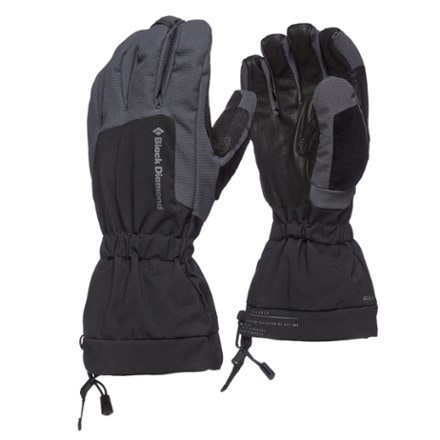Skip to search results
loaded 1 results
Black Diamond Thinsulate Snowsports
(1 product)Products (1)
Filter
- Snowboarding (1)
- Snow Clothing (1)
- Snow Gloves (1)
- Skiing (1)
- Ski Clothing (1)
- Downhill Skiing (1)
- Waterproof (1)
- Top Rated (1)
- Insulated (1)
- Bluetooth (4)
- GORE-TEX (8)
- Kevlar (1)
- Pertex (5)
- PrimaLoft (21)
- RECCO (9)
- Thermolite (3)
- Thinsulate (1)
- Snowsports (1)
- Black (1)
- Unisex (1)
- Full Finger (1)
- Synthetic (1)
- $50.00 to $99.99 (1)
- Regular (1)
Sort: Best Match
View:
- Black DiamondGlissade GlovesTop Rated$89.95(30)30 reviews with an average rating of 4.8 out of 5 stars
Sort: Best Match
Related Expert Advice articles
Learn how to choose and use an avalanche transceiver for backcountry safety. Explore features, types, training tips, and top-rated models at REI.
Read full article: How to Choose and Use an Avalanche Transceiver
What type of skiing will you be doing?
- Downhill ski poles: Poles for alpine skiing help with balance and timing turns. Many are fixed length; some are adjustable.
- Backcountry ski poles: Opt for adjustable poles so you can lengthen poles when going uphill and shorten them when descending.
- Cross-country ski poles: Longer and lighter, designed to help you glide forward efficiently. Poles for skate skiing are longer than for classic skiing.
Find the right length
When looking for proper fit, consult the brand's sizing chart. For downhill skis, wear your boots and turn the poles upside down. Grip the poles just below the basket. Your elbow should form a 90° angle. If the angle is less than 90°, try a shorter pole. If the angle is greater, get a longer pole.
Pole features
- Straps: Wrist straps help retain poles during turns and falls. Some models have detachable straps for quick transitions.
- Baskets prevent poles from sinking into the snow. Choose a standard basket for most conditions, and use a larger basket for powder skiing.
Consider your main activity:
- Hiking: Compatible with hydration reservoirs; some have straps or loops to attach trekking poles or other gear.
- Running: Designed to limit bounce; compatible with water bottles or hydration reservoirs.
- Climbing: Slim profile with abrasion-resistant reinforcements.
- Traveling: Has compartments for easy organization; many meet carry-on size requirements.
How much gear will you carry?
- 20L or less: Ideal for short runs, day hikes or quick outings.
- 21–35L: The sweet spot for hiking and travel.
- 36–50L: Best for extended trips or adventures requiring more gear or clothing.
Find the right fit:
- Daypacks are available in a range of sizes.
- Check your torso length and waist against the brand's size chart for the best fit.
- Many packs feature adjustable torso lengths to fine-tune your fit.
Learn what backcountry ski accessories you may need, including climbing skins, ski crampons, climbing wires, ski leashes and knee pads.
Read full article: How to Choose Climbing Skins and Backcountry Ski Accessories
Learn how to choose climbing skins for your skis and trim them to fit. Includes videos.
Read full article: How to Choose, Trim and Attach Ski Climbing Skins
Avalanches are a risk any time you head into snow-covered mountains. Learn basic information to help you make good decisions to avoid avalanches.
